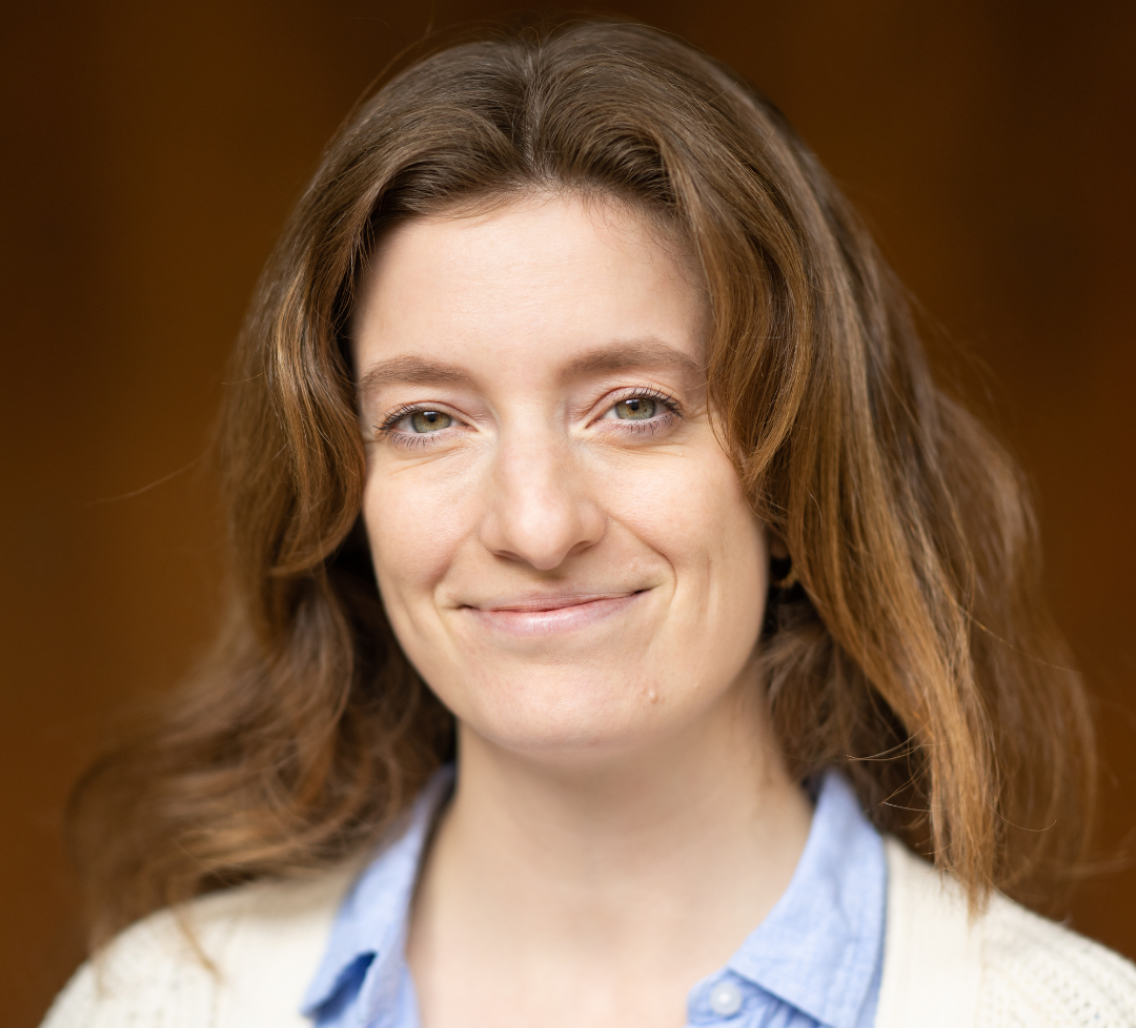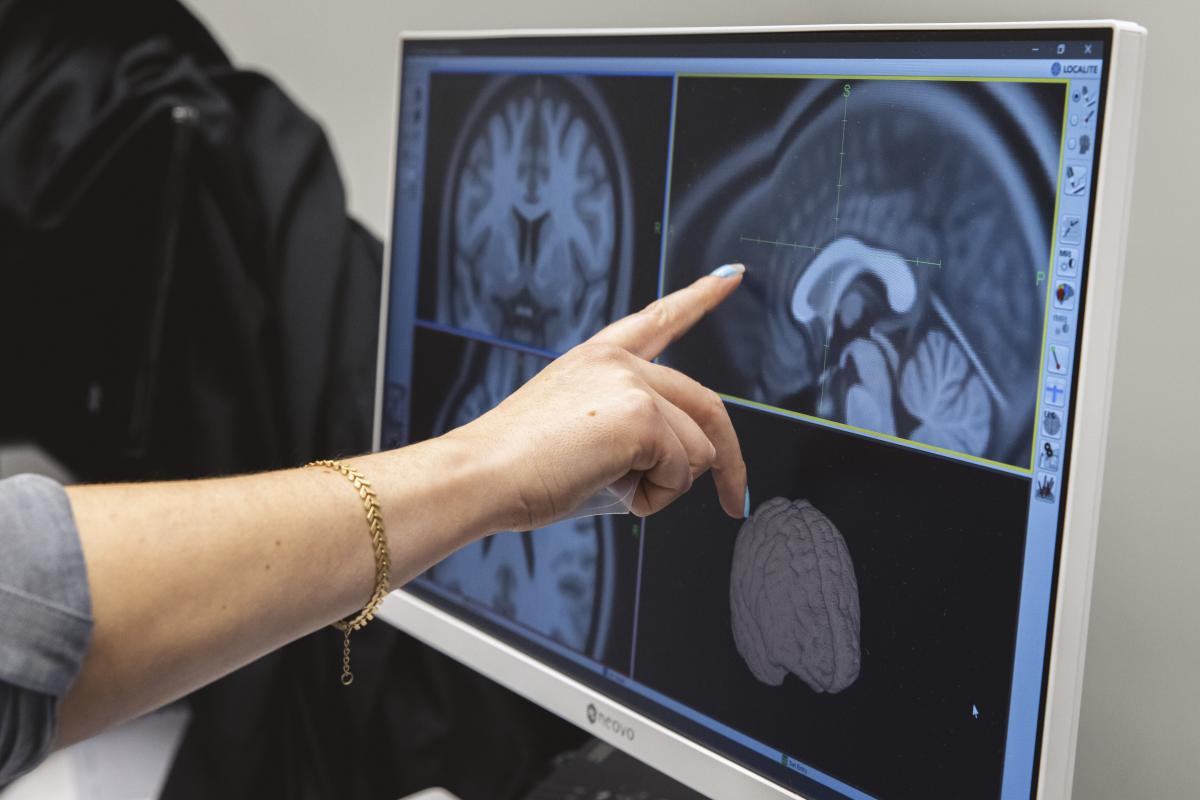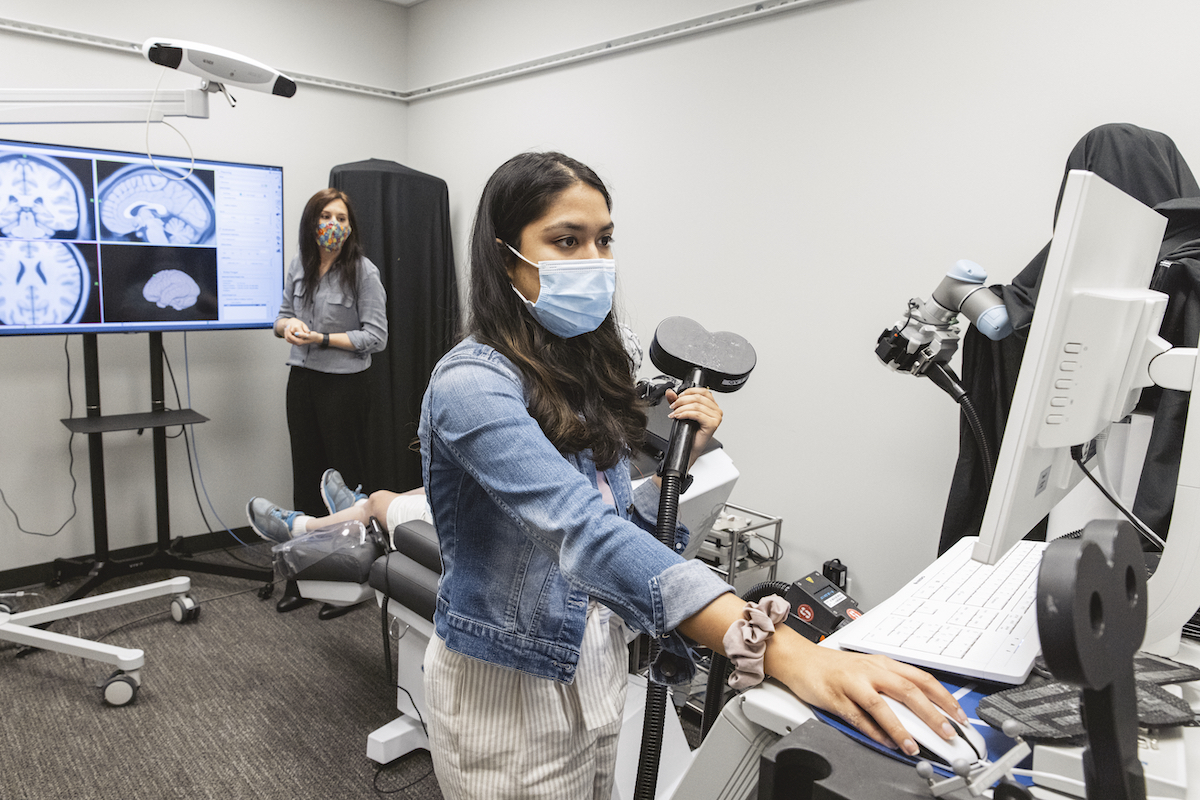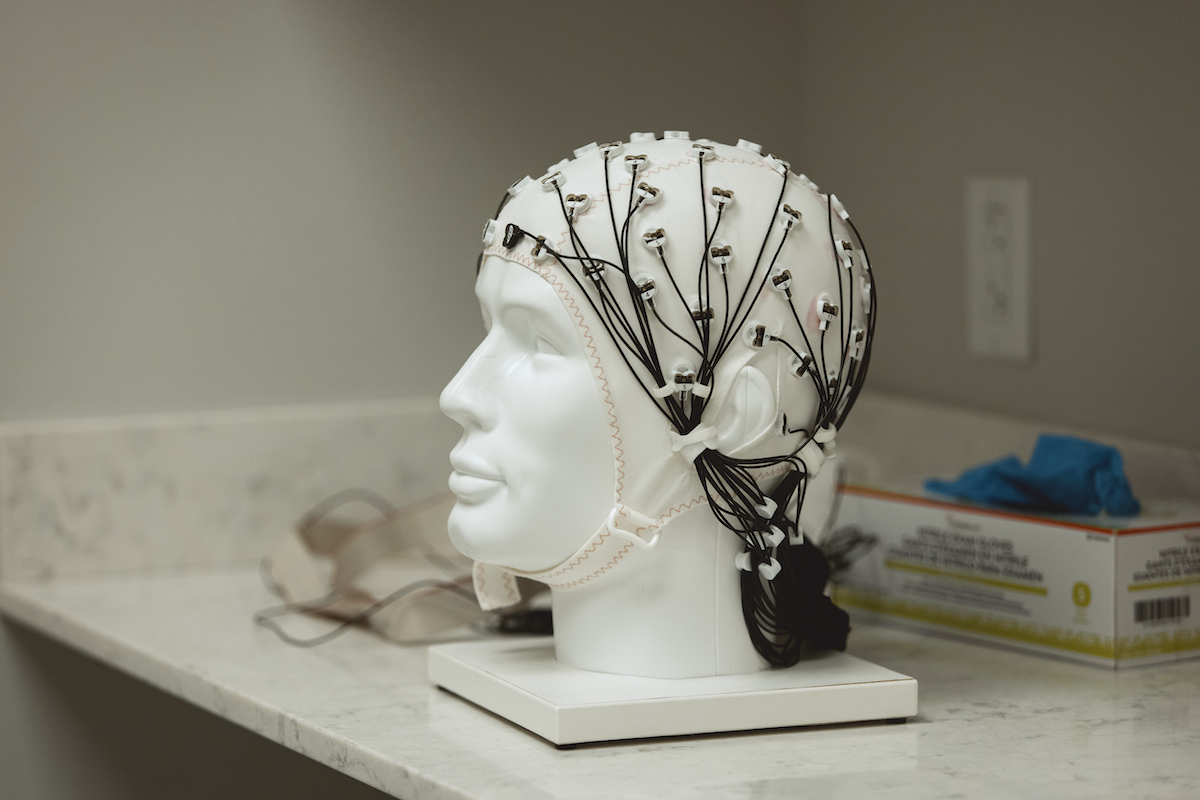Opening windows onto the human brain - a Q&A with Milena Kaestner

The Wu Tsai Neurosciences Institute is pleased to welcome Milena Kaestner, PhD, as the director of our Koret Human Neurosciences Community Laboratory.
The Koret lab hosts state-of-the-art electroencephalography (EEG) and transcranial magnetic stimulation (TMS) technologies, which make it possible for scientists to study brain activity in human research subjects with unprecedented clarity and control.
Electroencephalography (EEG) involves recording from a network of electrodes positioned around the scalp. It allows researchers to listen in to the ebb and flow of electrical activity across the networks of brain circuits that underlie our mental lives and behavior.
Transcranial Magnetic Stimulation (TMS) uses magnetic fields to enhance or suppress the activity of brain circuits in a targeted way. This allows researchers to establish cause and effect: demonstrating if a particular circuit is a) sufficient or b) necessary to produce a particular experience or behavior.
Kaestner has long studied the human visual system as a graduate student at the University of York in the UK and as a postdoc at Stanford with Tony Norcia, one of the founding-codirectors of the Koret lab. Her research led to better understanding of how the brain combines visual information from our eyes and how the visual system develops from childhood to adulthood.
She brings deep expertise in EEG research from her time in Norcia lab, which has pioneered advanced techniques for using EEG to precisely localize activity within the brain. And she is working closely with Stanford’s leading TMS researchers, including the lab’s other founding co-director, Nolan Williams, to make the lab’s cutting edge TMS technologies available to a wider swath of the campus community.
Kaestner shared with us her eagerness to advance the mission of the neurosciences community laboratories — to make high-end technologies for non-invasive human neuroscience research available to scientists across campus, regardless of past experience. Her goal, she told us, is to make the Koret lab not just a technical resource but also a welcoming and supportive intellectual community for scientists across the university interested in understanding the mysteries of the human brain.
Read our interview with Kaestner to learn about her background in science and her goals for the Koret lab. The interview has been edited for length and clarity.
How did you get started in science?
My dad is a physicist, and science was always something that I was drawn to as a kid — I did a lot of “kitchen counter” science when I was little! I decided very early on I was going to be a psychologist, because humans are so interesting! During undergrad, I got pulled more and more into neuroscience. I wanted to be able to understand cause and effect when it comes to our minds and brains, and it turns out humans are also really complicated! (Laughs)
I ended up working in a vision lab as a summer project and loved it. I loved being able to break down something as complex and huge as vision into precise questions that we could start to actually answer. So I wound up doing my PhD studying the binocular visual system, which is basically how the brain combines left and right eye information into a single perception of a visual scene.
How did your research spur your interest in techniques for studying human brain function?
During grad school, I largely used functional MRI, which is a fantastic technique for pinpointing precisely where in the human brain things are happening. As I was finishing my degree I wanted to learn more about the question of ‘How?’ When does this activity arise, and what is the interplay across the brain? EEG really fits into that nicely, because it gives you the high-speed temporal resolution that fMRI doesn't give you.
Fortunately, my advisor at the University of York, Alex Wade, had done his PhD at Stanford with Brian Wandell and was able to connect me with Tony Norcia, who is an expert in EEG and one of the founding faculty directors of the Koret lab. As a postdoc in the Norcia lab I had a chance to learn cutting edge EEG techniques and also got into developmental questions of how the brain develops throughout infancy and childhood.

Researchers in the Koret Human Neurosciences Laboratory use anatomical brain imaging to target transcranial magnetic stimulation. Image credit: Andrew Broadhead.
What drew you to this new role directing the Koret Human Neurosciences Laboratory, which has cutting edge techniques for both EEG and TMS, a form of non-invasive brain stimulation?
I love developing and implementing new methods to answer important questions in the field. No single tool can address a single question completely. So having TMS and EEG together in the Koret lab is exciting, because you can get at networks and the brain in multiple different ways.
Because the Koret is at such a young stage, it's an exciting time to be able to build community between labs and across disciplines. I'm really looking forward to building connections with labs across campus who might not necessarily know about each other's work because they're working in such different departments. I also hope to collaborate with Wu Tsai Neuro’s other community laboratories, and perhaps host symposia or other events to spread the word and build community.
I’ve also been studying vision for a long time, so I’m partly excited about this position because of the breadth of topics the lab is set up to explore. It's exciting to have the opportunity to engage in projects that span lots of different modalities, perspectives, and research questions. It's so rare to have all of these things at your fingertips.
Could you dig deeper into how EEG and TMS can be combined to interrogate brain networks? What kinds of studies or research questions can the lab make possible?
Well, EEG is really about how signals in the brain evolve over time — you can see with very high accuracy what is happening and when, which can be useful both experimentally and diagnostically. At the Koret we have high-density EEG nets of different sizes that will enable research in adults as well as children. I'm also looking forward to developing source localization pipelines for the community that will allow more precise identification of where EEG signals measured on the scalp are coming from in the brain.
With TMS, you can target specific parts of the brain and you can inhibit them or excite them. So where EEG gives you the ability to see correlates of mental activity and behavior, the power of TMS lies in its ability to test cause and effect. So if you have an idea that a particular part of a brain might be involved in a particular function or behavior, TMS lets you precisely target that brain region and turn it on or off, which lets you infer causality.

Scientists Jessica Ross and Manjima Sarkar of the Stanford Personalized Neurotherapeutics Lab, conduct research using transcranial magnetic stimulation and electroencephalography in the Koret Human Neuroscience Laboratory at the Wu Tsai Neurosciences Institute. Photo by Andrew Broadhead.
TMS is also increasingly being used as a therapeutic tool in the psychiatry world, which makes it a very exciting area of clinical research. We are supporting a number of very exciting projects with labs based in the medical school, where researchers are pioneering new ways to treat psychiatric conditions and to guide treatment with the help of the advanced neuronavigation tools that we have available at the Koret.
Basically, you can think of TMS as something that can disrupt the activity in a specific part of a neural network, and EEG as something that can measure dynamics across a network. So, things get really exciting when you combine them — with EEG you can assess how the TMS is affecting the activity in the network directly. We support research groups who are interleaving the techniques, or even using them simultaneously.
It's very inspiring to be around this kind of work, at least for me. I've been kind of a grassroots scientist for so long, seeing work that actually directly improves people's quality of life is really exciting.
It’s an exciting thing the Koret lab is making available to researchers across campus, but I could imagine it being a bit forbidding for people who haven't been involved in those techniques before. How do you get started?

An EEG cap on a mannequin in the Koret Human Neuroscience Laboratory at Wu Tsai Neuro. Photo credit: Andrew Broadhead
Sometimes, the barrier to entry is something as simple as not knowing what tools you would need to analyze the data once you collect it. So I'm hoping to build a nice wiki and a set of tools that people can use to get started more quickly. I also plan to host seminars and skills exchanges where people who use the lab can learn about one another’s work.
I want to create an atmosphere where people aren't afraid to ask questions, or if they get stuck, they know who to turn to. When I was a trainee, just knowing who to go to and having friendly people around who can help you troubleshoot things always made everything so much better, so that’s really important to me.
One of the things that’s so valuable is that we have some of the world experts in these techniques working with the lab, including our founding faculty directors Tony Norcia and Nolan Williams, and super-users like Corey Keller’s group or new faculty member Fiona Baumer who studies childhood brain development and seizure disorders.
The Koret lab is going to be a really beneficial resource for people who maybe have a research question that is outside of their usual realm of research — whether they don’t have access to the right facility or don’t have specific grant support — and so would normally feel too risky. My ambition is that by building a community around these techniques and sharing access to these tools, we're going to get some really exciting research that kind of pushes the envelope or is just a little bit more high risk. In my mind that’s where the most fun is.
Learn more about the Koret Human Neurosciences Community Laboratory.